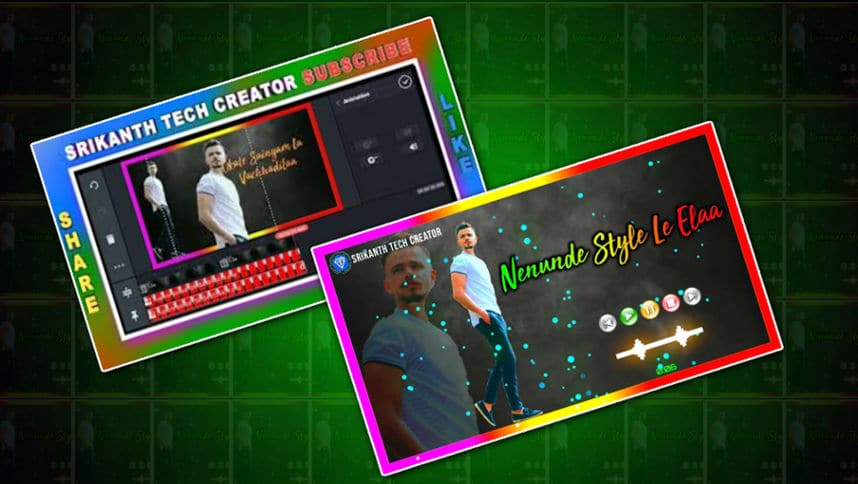The Future of Technology: Trends Shaping Our World
Technology continues to revolutionize every aspect of our lives, from how we work and communicate to how we solve global challenges. Staying informed about emerging trends is crucial for individuals and businesses alike. Here’s a deep dive into the technological advancements to define the future.
Artificial Intelligence and Machine Learning
AI’s Expanding Influence
Artificial intelligence (AI) is no longer just a buzzword; it’s a cornerstone of innovation. From personalized shopping recommendations to autonomous vehicles, AI is transforming industries. Machine learning, a subset of AI, enables systems to learn and improve from data, creating smarter algorithms and more efficient processes.
Applications Across Industries
- Healthcare: AI-powered diagnostics and predictive analytics are improving patient outcomes.
- Finance: Fraud detection and automated trading algorithms are streamlining operations.
- Retail: Personalized recommendations enhance customer experiences.
Challenges to Address
While AI offers immense potential, ethical concerns like bias, job displacement, and data privacy need to be addressed. Establishing robust frameworks for responsible AI is essential.
The Rise of 5G and Beyond
What 5G Brings
5G technology promises lightning-fast internet speeds, low latency, and improved connectivity. This next-generation network will enable advancements in smart cities, autonomous vehicles, and the Internet of Things (IoT).
Impact on Everyday Life
- Faster Downloads: Seamless streaming and data transfer.
- Enhanced Gaming: Real-time multiplayer gaming experiences.
- Smart Devices: Better integration of IoT devices, from home assistants to wearable technology.
Looking Ahead to 6G
While 5G is still rolling out globally, researchers are already exploring 6G, which aims to bring even faster speeds and unprecedented connectivity, potentially by the 2030s.
Quantum Computing
A New Computing Paradigm
Quantum computing leverages the principles of quantum mechanics to process information in ways traditional computers cannot. This technology has the potential to solve complex problems, such as climate modelling and drug discovery, that are beyond the reach of classical systems.
Real-World Applications
- Cryptography: Enhancing data security through quantum encryption.
- Supply Chain Optimization: Improving logistics and resource management.
- Scientific Research: Accelerating breakthroughs in physics, chemistry, and biology.
Barriers to Adoption
Quantum computing is still in its infancy, with challenges like error correction, scalability, and high costs hindering widespread use. However, progress is steady, and major tech companies are investing heavily in this field.
Blockchain Beyond Cryptocurrency
Decentralization as a Game-Changer
Blockchain, the technology behind cryptocurrencies like Bitcoin, is being utilized in various sectors beyond finance. Its decentralized nature ensures transparency, security, and immutability.
Key Use Cases
- Supply Chain Management: Tracking goods from origin to destination to ensure authenticity.
- Healthcare: Securing patient data and streamlining medical records.
- Voting Systems: Ensuring secure and transparent elections.
Challenges and Opportunities
While blockchain’s potential is vast, issues like scalability, energy consumption, and regulatory uncertainty must be resolved for broader adoption.
The Evolution of the Metaverse
What Is the Metaverse?
The metaverse is a virtual, shared space created by the convergence of physical and digital realities. It combines virtual reality (VR), augmented reality (AR), and blockchain to create immersive experiences.
Industries Embracing the Metaverse
Gaming: Platforms like Roblox and Fortnite are leading the charge.
Retail: Virtual stores and try-before-you-buy experiences.
Education: Interactive and immersive learning environments.
Future Implications
As the metaverse evolves, it will redefine social interactions, commerce, and entertainment. However, concerns around privacy, accessibility, and mental health must be addressed.
Sustainability Through Technology
Green Tech Innovations
Technology is playing a crucial role in addressing environmental challenges. Renewable energy sources, energy-efficient devices, and smart grids are paving the way for a more sustainable future.
Prominent Innovations
- Electric Vehicles (EVs): Reducing carbon emissions with widespread EV adoption.
- Vertical Farming: Optimizing food production with minimal land use.
- Recycling Technologies: Improving waste management and resource recovery.
Corporate Responsibility
Companies are leveraging technology to track and reduce their carbon footprints. AI-powered analytics and blockchain-based supply chain tracking are helping businesses meet sustainability goals.
Cybersecurity in a Connected World
Growing Threats
As technology advances, so do cyber threats. From ransomware attacks to data breaches, cybersecurity is more critical than ever.
Emerging Solutions
- AI-Driven Security: Proactively identifying and mitigating threats.
- Zero-Trust Architecture: Verifying every user and device before granting access.
- Biometric Authentication: Enhancing security with fingerprint and facial recognition.
Importance of Awareness
Educating individuals and organizations about best practices, such as strong password management and regular software updates, remains a key component of cybersecurity.
Human-Centric Design and Technology
Enhancing User Experiences
The focus on human-centric design ensures that technology serves people effectively and intuitively. This approach prioritizes user needs and accessibility.
Applications in Daily Life
- Smartphones: Intuitive interfaces and accessibility features.
- Wearables: Health monitoring devices like smartwatches.
- Home Automation: Seamless integration of smart home devices.
The Ethical Dimension
Ensuring inclusivity and avoiding biases in design is critical to creating technology that benefits everyone, regardless of ability or background.
The Role of Edge Computing
What Is Edge Computing?
Edge computing processes data closer to its source, reducing latency and enhancing real-time decision-making. This is especially critical for applications like autonomous vehicles, smart cities, and industrial automation.
Advantages Of Cloud Computing
- While cloud computing remains vital, edge computing offers:
- Reduced Latency: Faster response times for critical tasks.
- Data Privacy: Keeping sensitive data local instead of transmitting it to centralized servers.
- Cost Efficiency: Lower bandwidth usage and storage costs.
Applications Across Sectors
From predictive maintenance in manufacturing to personalized healthcare solutions, edge computing is becoming a cornerstone of modern technology.
Biotechnology and Genetic Engineering
Transforming Healthcare
Biotechnology is unlocking new possibilities in medicine, agriculture, and environmental science. Genetic engineering, particularly CRISPR technology, is enabling precise modifications to DNA, offering solutions to genetic disorders and agricultural challenges.
Innovations to Watch
- Gene Therapy: Treating diseases by correcting genetic mutations.
- Lab-Grown Meat: Reducing the environmental impact of traditional farming.
- Bioinformatics: Leveraging big data to accelerate scientific discoveries.
Ethical Considerations
While biotechnology promises groundbreaking advancements, ethical concerns surrounding genetic manipulation, accessibility, and long-term impacts must be carefully navigated.
Extended Reality (XR) Applications
The Spectrum of XR
Extended Reality (XR) encompasses VR, AR, and mixed reality (MR). These technologies are transforming how we interact with the digital and physical worlds.
Practical Uses
- Training Simulations: Immersive learning environments for industries like healthcare and aviation.
- Remote Collaboration: Virtual meeting spaces for enhanced productivity.
- Entertainment: Enhanced gaming and cinematic experiences.
Barriers to Entry
Despite its potential, XR faces hurdles such as high development costs, hardware limitations, and user accessibility. However, ongoing innovation is steadily addressing these challenges.
Conclusion
Technology continues to advance at a rapid pace, shaping the way we live, work, and interact with the world. From AI and quantum computing to the metaverse and green innovations, these trends hold the promise of a brighter, more connected future. However, navigating the ethical, social, and environmental implications will be key to harnessing technology’s full potential. As we move forward, staying informed and adaptable will ensure we remain active participants in this transformative era.
💠Full Tutorial Click Here
💠Photos, Videos Click Here





